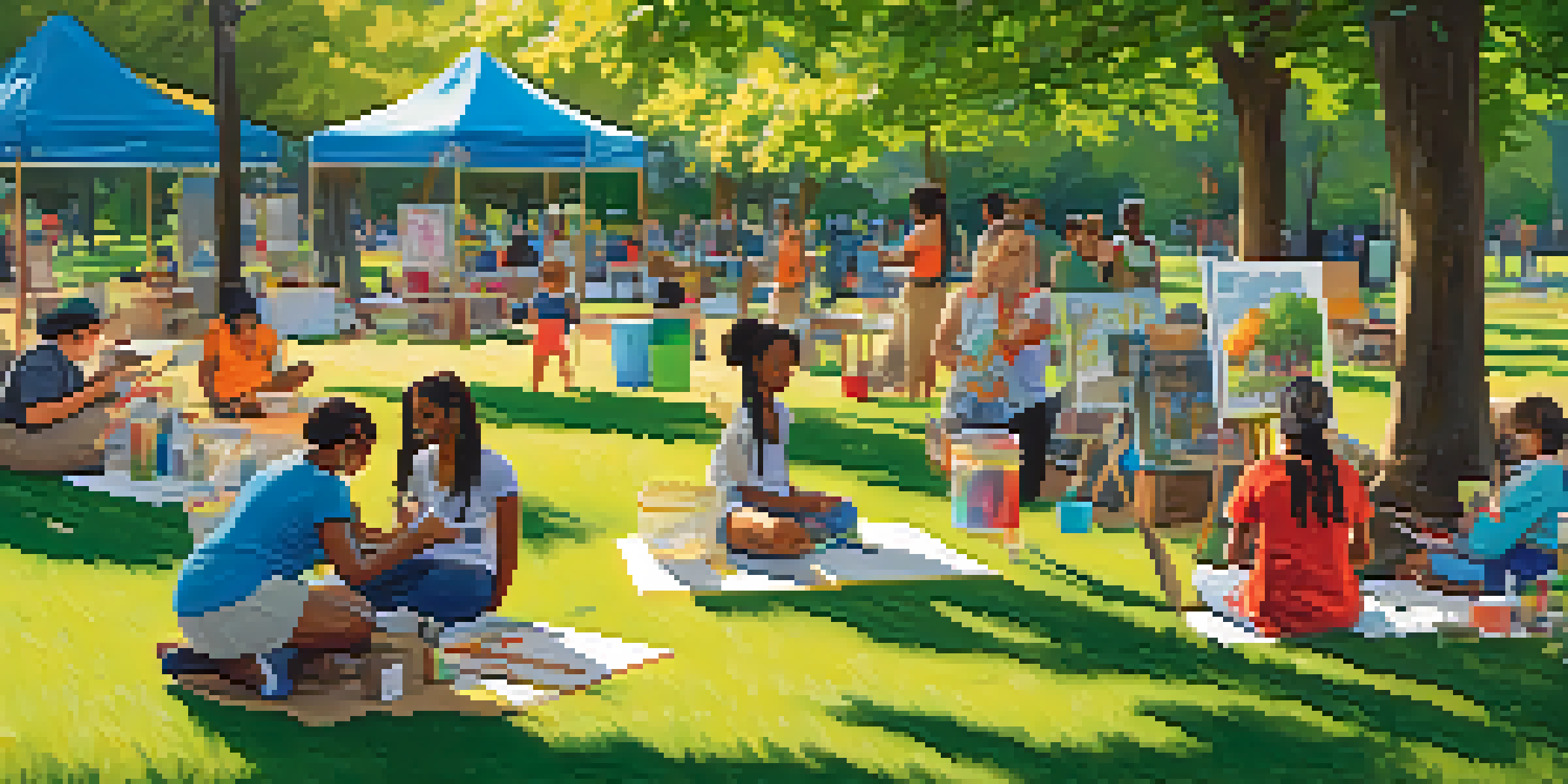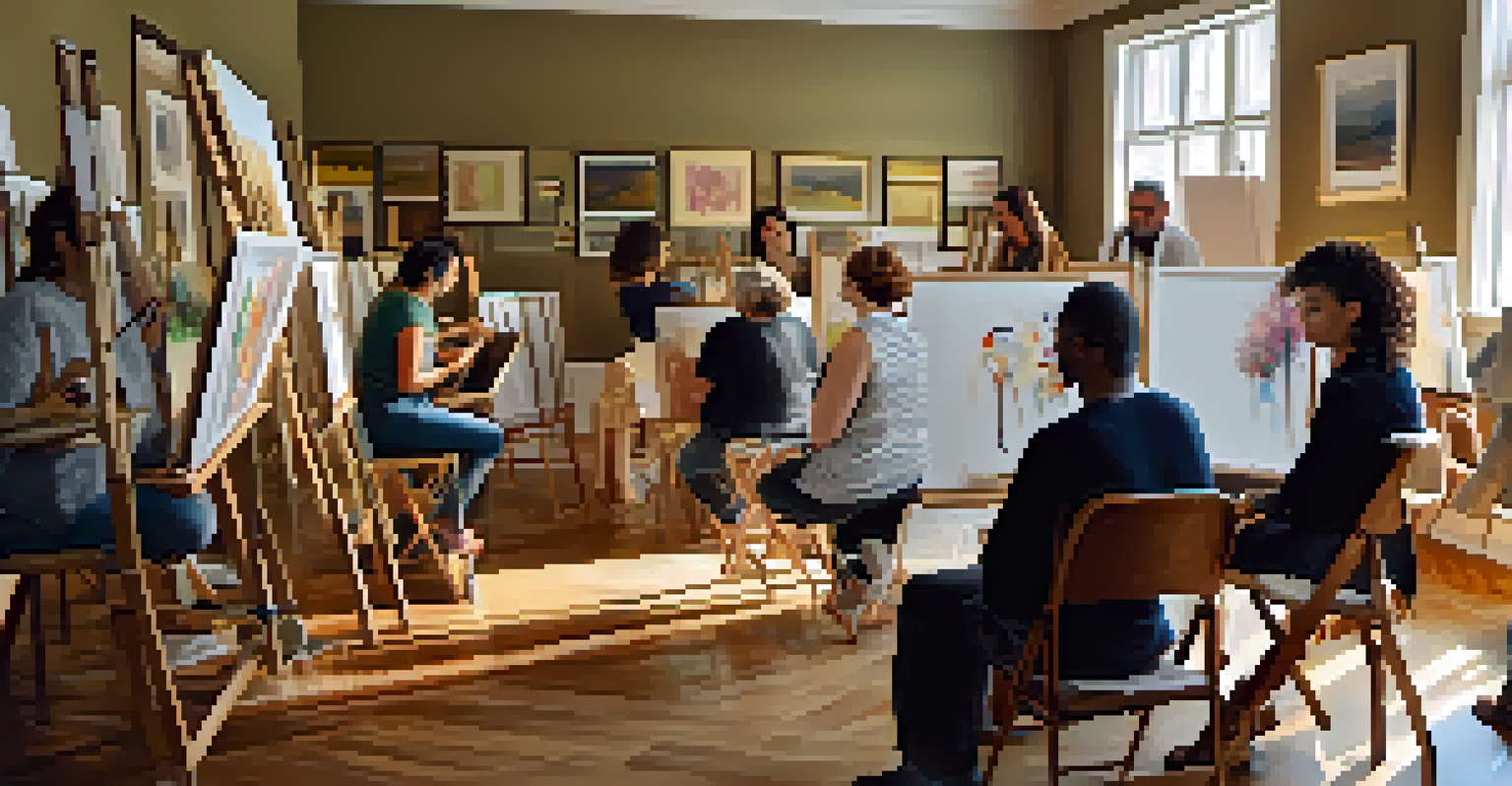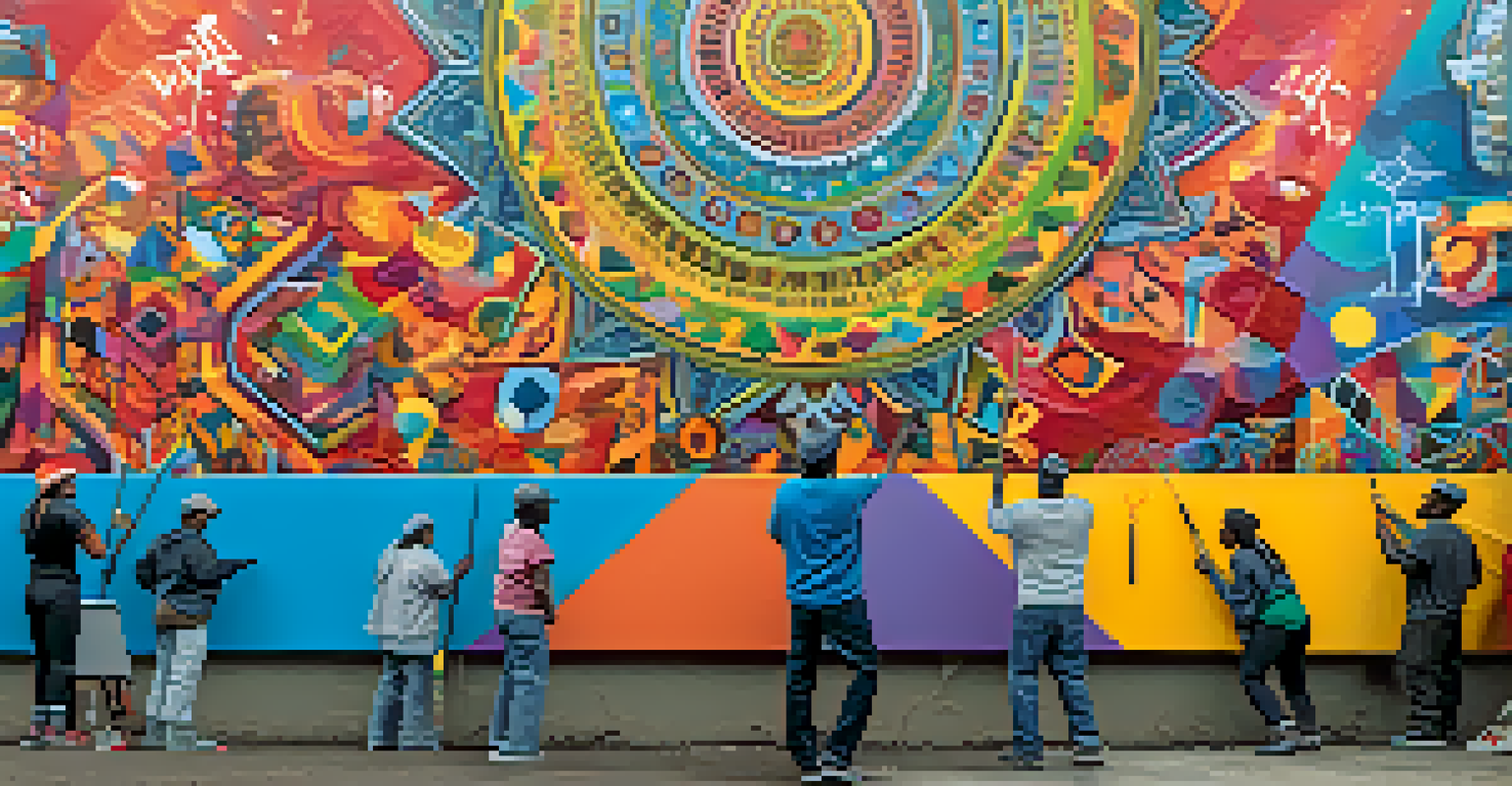The Therapeutic Effects of Art on Community Health

Understanding Art Therapy and Its Goals
Art therapy is a therapeutic practice that uses creative expression to promote emotional healing. By engaging in artistic activities, individuals can explore their feelings, reduce anxiety, and enhance self-awareness. The primary goal is not to create a masterpiece but to facilitate personal growth and healing through the creative process.
Art enables us to find ourselves and lose ourselves at the same time.
In community settings, art therapy can foster a sense of belonging and encourage social interaction. It allows participants to share their experiences and connect with others, which is crucial for mental health. This collective experience can create a supportive environment where individuals feel understood and valued.
Ultimately, art therapy aims to empower individuals by helping them articulate their emotions and experiences. This self-expression can be particularly beneficial in communities facing trauma, as it provides a safe outlet for processing difficult feelings. Through art, people can find their voice and reclaim their narrative.
The Role of Art in Building Community Connections
Art has a unique ability to bring people together, creating bonds that might not otherwise form. Community art projects encourage collaboration, allowing residents to work towards a common goal. This shared experience fosters trust and strengthens ties, which are essential for a healthy community.

Participating in group art activities, such as mural painting or sculpture installations, allows individuals to express their identity while contributing to a collective vision. This sense of ownership can boost community pride and engagement, leading to a more vibrant neighborhood. When people see their contributions reflected in the community, it enhances their sense of belonging.
Art Therapy Enhances Emotional Healing
Art therapy uses creative expression to promote personal growth and emotional healing, particularly in community settings.
Moreover, collaborative art initiatives can bridge cultural divides, allowing diverse groups to unite through creativity. By celebrating various artistic traditions, communities can cultivate understanding and appreciation of different perspectives, ultimately promoting unity and resilience.
Art as a Tool for Mental Health Awareness
Art can serve as a powerful medium for raising awareness about mental health issues. Creative projects can shine a light on topics that are often stigmatized, encouraging open dialogue and reducing the shame associated with mental illness. When art is used to tell personal stories, it resonates deeply and invites empathy from the audience.
The arts are not a luxury. They are a necessity. They are a part of what makes us human.
Community art exhibitions focused on mental health themes can create a safe space for individuals to share their experiences. These platforms allow artists to express their struggles and triumphs, fostering a sense of connection among viewers. By highlighting these narratives, communities can promote understanding and acceptance.
Additionally, art can provide a means of self-care and coping for those dealing with mental health challenges. Engaging in creative activities can reduce stress and improve mood, helping individuals manage their symptoms more effectively. In this way, art becomes not just a form of expression but also a therapeutic practice that supports mental well-being.
Enhancing Physical Health Through Creative Expression
While art is often associated with mental health, it also has tangible benefits for physical well-being. Engaging in creative activities can improve fine motor skills, increase coordination, and even relieve physical pain through relaxation. For example, painting or pottery can be physically engaging, promoting movement and dexterity.
Furthermore, art can serve as a distraction from chronic pain or illness, providing a mental escape and reducing perceived discomfort. Individuals often find solace in creative expression, allowing them to focus on the process rather than their physical limitations. This shift in attention can significantly enhance their overall quality of life.
Art Fosters Community Connections
Collaborative art projects encourage social interaction and trust, helping to strengthen community bonds.
Additionally, community art programs that encourage physical activity—like dance or performance art—can contribute to healthier lifestyles. By promoting movement in a fun and engaging way, these initiatives foster not only creativity but also physical fitness, ultimately benefiting the community's health.
Art's Impact on Social Cohesion and Resilience
In times of crisis or hardship, art can play a crucial role in fostering resilience within communities. Creative expression allows individuals to process their experiences and emotions, which can be particularly important during challenging times. Through art, people can find hope and solace, reinforcing the idea that they are not alone in their struggles.
Community art initiatives can serve as a rallying point, bringing residents together to heal and rebuild. By creating art that reflects their experiences, individuals can contribute to a shared narrative, strengthening communal bonds. This collective healing process can empower communities to face adversity with renewed strength.
Moreover, art can serve as a catalyst for change, inspiring action towards social justice and improvement. By highlighting pressing issues through creative mediums, communities can mobilize efforts to address challenges and advocate for meaningful change. In this way, art becomes not only a source of comfort but also a tool for empowerment and resilience.
The Importance of Accessibility in Community Art Programs
For art to effectively benefit community health, accessibility is paramount. Programs must be designed to reach individuals from all walks of life, ensuring that everyone has the opportunity to participate. This includes providing resources, materials, and spaces that cater to diverse needs and abilities.
Creating inclusive art programs can help break down barriers that prevent engagement, such as language differences or physical limitations. By considering the unique challenges faced by various community members, organizers can foster an environment where everyone feels welcome and valued. This inclusivity enhances the overall impact of art on community health.
Art Improves Mental Health Awareness
Creative initiatives can raise awareness of mental health issues, encouraging open dialogue and reducing stigma.
Additionally, outreach efforts can ensure that marginalized populations have access to these therapeutic benefits. By actively engaging with underserved communities, art programs can address specific needs and provide targeted support. Ultimately, accessibility is key to maximizing the positive effects of art on community health.
Evaluating the Impact of Art on Community Health Outcomes
To understand the true impact of art on community health, it's crucial to evaluate outcomes systematically. This can involve collecting data on participants' mental and physical health before and after engaging in art programs. By analyzing this information, communities can gauge the effectiveness of their initiatives and identify areas for improvement.
Qualitative feedback is equally important, as personal stories and testimonials can provide valuable insights into the transformative power of art. Listening to participants' experiences helps organizers understand how creative expression has impacted their lives, fostering a deeper appreciation for the role of art in healing.

Ultimately, ongoing evaluation not only highlights successes but also informs future programming. By adapting and refining initiatives based on feedback and outcomes, communities can continue to harness the therapeutic effects of art, ensuring that it remains a vital component of their health and well-being efforts.